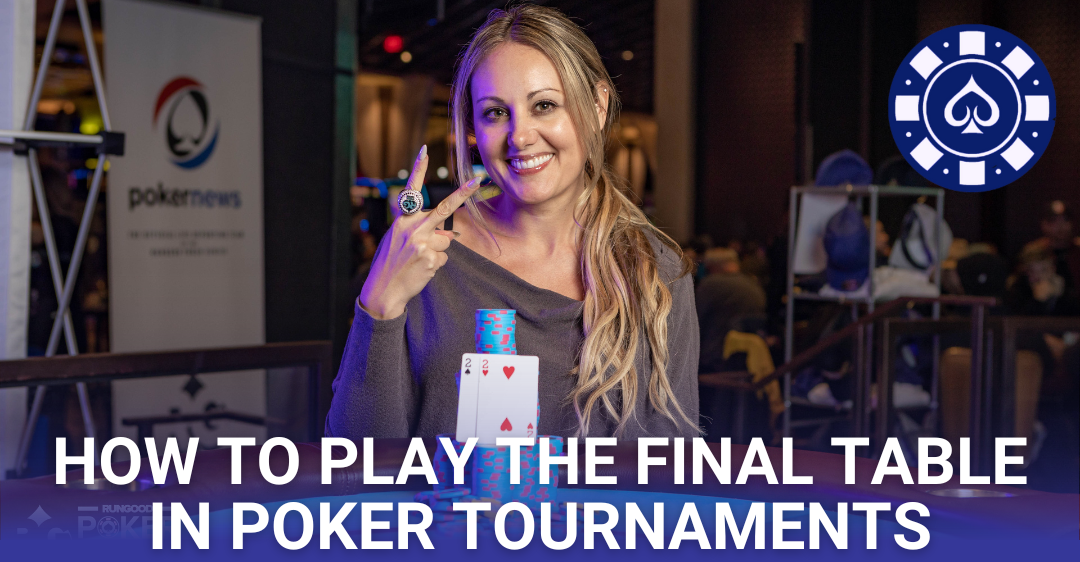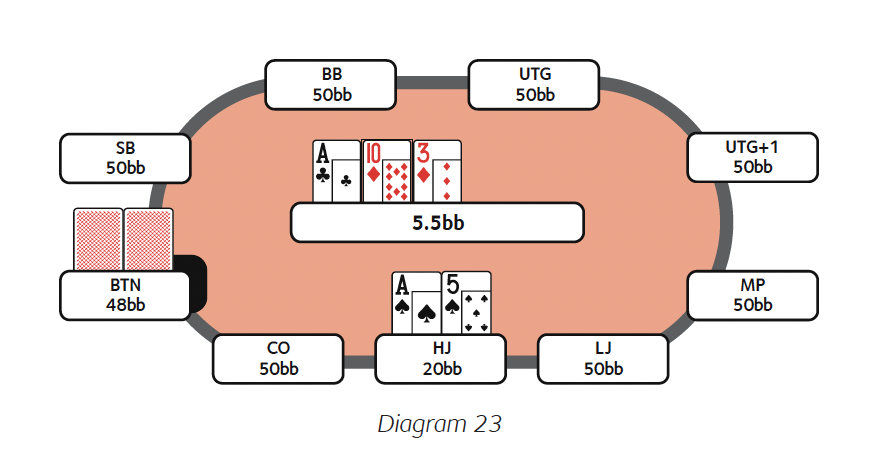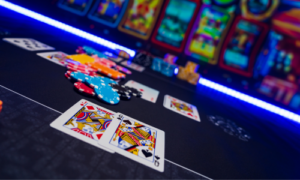You’ve made it! The final table is here, and the excitement is off the charts! There’s a lot of money at stake, and you’ve probably already started picturing yourself in that winner’s photo, trophy in hand.
But before we celebrate, there’s still work to do. Let’s break it down.

The final table is unlike any other stage of the tournament. There are fewer players left, and you’re getting closer and closer to a victory. As players are eliminated, the game shifts, and you’ll need to adjust how you approach seven-handed, six-handed, three-handed, and eventually heads-up play.
Big Stack Strategy: If you’re fortunate enough to have a big stack, don’t get reckless. There’s a balance here—you’ll want to bust the short stacks, but be careful about getting into ego battles with other big stacks early on. Sure, if you’ve got a big hand, go for it. Think of it like an alliance on Survivor: the big stacks can work together to knock out the short stacks, but once the field shrinks, it’s every player for themselves.
Remember: less edge = more pre-flop aggression; higher edge = more post-flop play.
On the other hand, sometimes it can be beneficial to keep the short stacks around and focus on taking out the middle stacks. The short stacks are less likely to win the tournament, so keeping them around while attacking middle and big stacks can be a good strategy as well.
Avoid Distractions:This might sound obvious, but the final table is no time for distractions. Focus is your best weapon, and you’ll need to be sharp and alert the whole time. Pay attention to the action, look for weaknesses, and stay ready to adjust your game plan based on what’s happening at the table.
And, hey, I get it—temptation is real. You might want to update your friends on social media with every pay jump or busted player, but now’s not the time for that. Stay off your phone and save the updates for after the tournament. Every second of attention matters at this stage, and you don’t want to miss a key read or moment because you were distracted.
You can update everyone after you win.
Seat Draws: Another piece of advice I have is to accept your position at the table. It always sucks to have bad seat draws. It can be a bummer when you’ve got aggressive players to your left while the tight players are on your right. But don’t let that affect you or your play. Seat draws are random. Adjust your strategy and play the hand you’re dealt.
Realizing Versus Accumulating: At the final table, there’s a constant ebb and flow between playing defensively (realizing equity) and playing aggressively (accumulating chips). Knowing when to switch gears is key.
- Realizing equity: When a bigger stack has you covered, you’ll want to play more cautiously. This is the time for pot control. Avoid bloating the pot with hands that can’t stand a raise, and let the bigger stack bluff into you. Sometimes you’ll be making those hero calls with fourth pair or ace-high, but that’s the kind of poker you need to play to survive.
- Accumulating chips: When you’re the one doing the covering, it’s time to put the pressure on. Be aggressive, make big bets, and deny your opponents the chance to realize their equity. Bet more when you’re in position, and target those middle and small stacks.

EX. Let’s say you’ve got a smaller stack, about 22 big blinds. You’re holding A♠-5♠ in the hijack and you min-raise. The button calls, and the flop comes A♣-10♦-3♦.
Now, instead of c-betting, consider checking. If you bet and get raised, you’re in a tough spot. By checking, you keep the pot under control, making it easier to play your hand without risking your entire stack on top pair with a marginal kicker.
Sometimes playing cautiously keeps you alive to fight another hand.
The final table is where champions are made, but it requires patience, focus, and smart adjustments. Don’t let the pressure get to you, avoid distractions, and always keep your eyes on the prize.
Play your position, adapt to the situation, and when the moment’s right—make your move!







